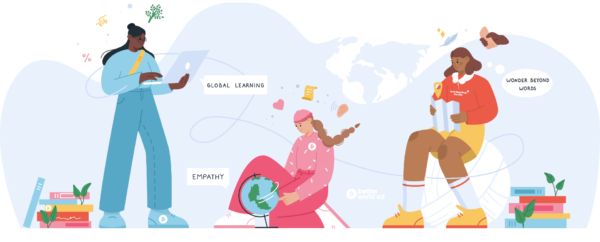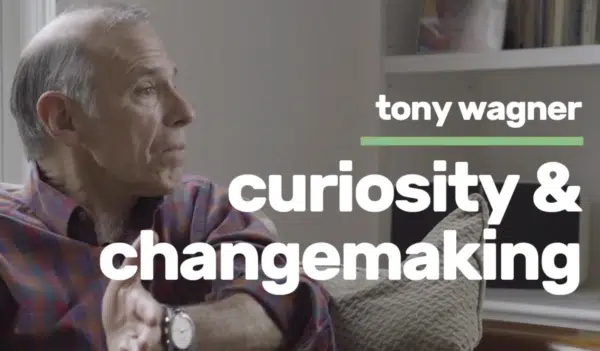How to Integrate Social Emotional Learning within Core Subjects (Including Math!)
It’s time to integrate SEL with math, literacy, and more! Sometimes with all the different things going on at school, Social Emotional Learning takes a backseat.
However, growing research has shown that Social-Emotional Learning (SEL) plays an essential role in improving student wellbeing and their approach to academics.
SEL has been proven to positively impact student academic success, leading to higher graduation rates and more significant life opportunities after K-12. Integrate SEL with academics to greaten our collective impact.
Categories
"How To" Ideas, Teaching Resources
Tags
How To, Integrated SEL, Learning, SEL, SEL Math, Teaching
Browse Related Articles and Resources
How to Integrate Social Emotional Learning within Core Subjects (Including Math!)
It’s essential we integrate SEL with academics.
Yet sometimes with all the different things going on at school, Social Emotional Learning (SEL) takes a backseat. Or due to confusion on what the term means, the mission to integrate SEL finds resistance.
Growing research has shown that SEL plays an essential role in improving student wellbeing and their approach to academics. SEL has been proven to positively impact student academic success, leading to higher graduation rates and more significant life opportunities after K-12.1
Listed below are some ways you can integrate SEL within your core subjects (and check out how other teachers are doing the same!).
Integrate SEL and Math
You can transform math problems into engaging stories that provide context before zooming in on the numbers! Susan Totaro, a Director of Instruction and Curriculum in NJ, shared how word problems can be really challenging for students when they aren’t exposed to the context of a story surrounding that problem. They need to see the “big picture” to have a clear understanding of what the problem is addressing and to build the motivation to help the individual solve the problem. We like to call these math challenges rather than a problem to encourage students to take on the challenge to find a solution in each story. Sometimes, a simple change of a word can make a difference in how students regard a subject!
In every Learning Journey, the stories contain real-world math applications that are related to the person in the story and describes how a person might be using the math concept to address a challenge they are facing. For example, students can learn about how a banana farmer named Octavio in Ecuador uses fractions to determine which day he spent more time working on the farm. When students read the math challenges they are asked to help find a solution in a way that makes it fun for them to solve the math challenge. Students feel the purpose in their work because they are asked to help that person like Octavio figure out the solution.
Find a Learning Journey that relates to the math topic you are focusing on for the day or week (these can be easily found in our database by filtering through the math grades and topics). Then, go over the story and allow students to dive into the math challenges independently or as a group. As a fun wrap up activity, encourage students to share their creative approaches to finding a solution. You can also connect the experience back to growing social and emotional skills by discussing how attitude affects how we problem solve. Encourage them to reflect on what they noticed as they completed their math challenges and any attitude shifts they experienced.
Integrate SEL and Social Studies
Each Learning Journey focuses on one individual in their home environment. You can use these videos and stories to teach about civics, geography, economics, and even world history. The videos allow your students to make a real connection with a person in a different part of the world. The relevancy enables them to build their SEL skills while you and your class simultaneously discuss social-studies related topics.
If your class is studying the differences and similarities between cultures, for example, you could use Learning Journey videos and stories to give students real-life scenarios to glean information from. Perhaps you could start by comparing and contrasting life and culture in Indonesia and Kenya. Before diving into the videos, you might consider having students think about any assumptions they might have about other cultures. Then, together you all can unpack and address those stereotypes as you read the story.
Integrate SEL and Science
Bring science to life by sharing with your students’ different aspects of living things on this planet. With Learning Journeys, you can use the videos and stories to teach about Earth and human activity, forces of motion, ecosystems, and more.
For example, if you are discussing the topic of energy, you can share the story and video of Daniel, who is helping bring solar power to his community in South Africa to prevent fires that can occur when using propane lamps. You could also share a video from Guatemala about a man named Mario whose family builds hand-made stationary bikes to help villagers use less energy in daily tasks, like grinding kernels of corn. To top it off, show your students how other kids are using energy to solve a community problem. In India, Shruti and her friends recently lost a friend to Dengue Fever from a mosquito bite, so they invented a solar powered mosquito repellant!
Integrate SEL and Literacy
Learning Journeys are brimming with discussion questions to provoke critical thinking and communication amongst your students. Students often come up with even more questions that lead them into a deeper understanding of the text from the story and the video.
During your literacy block, you can practice critical comprehension skills by discussing key details from the text, having students share new knowledge learned, and promoting a deeper understanding of what is happening in a person’s life through his/her own perspective. For example, if you wanted students to practice making inferences, the wordless videos (all of our videos are wordless!) are an excellent way for students to apply this skill. If identifying a text’s central theme is the focus, you could read the story together as a class and then write down a list of main topics and ideas. Lastly, you could practice the integration of content by using both the video and the story and then having students connect the dots between the two.
If you are interested in learning about other ways to use Learning Journeys, check out our 5 Ways to Teach Empathy in School & Home article.
How else do you think Learning Journeys could work to integrate SEL and academics?
Please share in the comments below! Or tag us on social and show us pictures / videos of how you are using Better World Ed to integrate SEL into academics.
How to Integrate Social Emotional Learning within Core Subjects (Including Math!)
More resources to integrate SEL coming soon!






